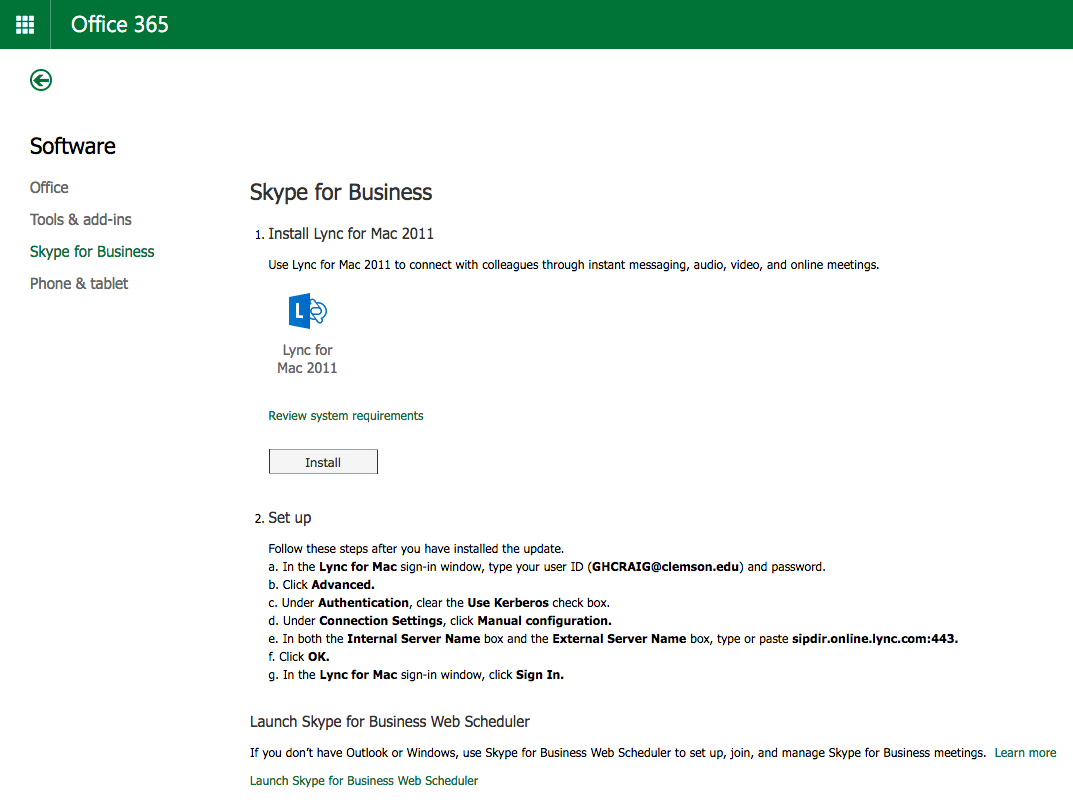
#Lync for mac skype windows#
How Windows Fabric works under the hood Front end Failover

From this point on, it is the primary front end responsibility to write all new user’s information to the SQL backend (like user create a new conference or add a new user) as well as replicate them to both primary backup and secondary backup servers.Once front end server finish collecting user’s information from the SQL backend, it replicate user’s information to both the primary backup and backup servers.First time front end service “Starting”, the front end server connect to the SQL backend and collect the “User’s Information” of all users that it is responsible for.I would summarize how windows fabric works in 4 simple steps SIDE NOTE: the Routing Group Id is written to the Active Directory user account under the attribute msRTCSIP-UserRoutingGroupId in reverse order So as you see, my only Routing Group (user) has FrontEndID server “3” which is LYFE02, that’s the same result we got using Get-CsUserPoolInfo command line up in this article. You can “decrypt” this value by checking the FrontEndID table, this table include the front end nodes in the pool (run the following query) In my lab I have only one user enabled for Lync, so when checking Routing Groups in the RTC database I see only one Routing Group (does not matter which SQL you’re checking because Lync is not depending on the backend anymore)Įach Routing Group has a FrontEndID associated to it, this is the Primary Front end server for that Routing Group (User), in my lab it has the value “3” the number of Routing Groups increases when you add more users to the front end pool, you find Routing Groups in the RTC database inside the RoutingGroupAssignment table (use the following query):įROM. Primary front end= LYFE02 (keep it in mind)Īs agreed so far each user have a primary front end, this info is written in the SQL backend databases with a little tinny difference, when it comes to SQL backend each Lync user is a Routing group.This can easily be found by using PowerShell command lineĪs you see in the output of the command line above the user has: In my lab I have one Enterprise pool with 3 front ends in it LYFE01, LYFE02 and LYFE03, every user enabled for Lync in this pool gets a primary front end server, and two backup servers, one which is the primary backup server and another is a secondary backup server NOTE: Windows Fabric is configured automatically every time the services starts up, as an administrator there is nothing you need to do regarding Windows Fabric, the configuration can be found inside Manifest file of the Windows Fabric located in the following pathĬ:\Program file\windows fabric\bin\clustermanifest.current

Microsoft Best Practices: Windows Fabric is a kind of clustering technology, with Lync 2013 Microsoft recommended to use 3 nodes in an Enterprise pool, and in case you cannot use 3 nodes in a pool then deploy two standard edition pools and use pool pairing for high availability.

Can scale further by adding more Front end servers to the pool.

What I see best advantages of this approach are: But this has changed with Lync 2013 server architecture, where users services were moved from the backend databases to the Lync Front end servers. In previous version of Lync 2010, user services was provided by the Backend database, and that’s why when the SQL backend goes down, the Lync clients goes into “Limited Functionalities” status. I’m planning also to use this article as a guide to share with customers which have an existing Lync deployment or considering Lync to help them in their decisions.
#Lync for mac skype series#
So I decided to write another post of my “Simple Understanding” article series aimed to explain the Lync 2013 server architecture, how it utilize windows fabric for high availability and why you should not deploy a 2 nodes Enterprise Edition pool, I’ll try to use small words and simple explanations as I can. I saw a scary number of Lync 2013 deployments in the last 8 months where the Lync is deployed using an Enterprise pool with only two front end servers, even I saw a couple that have an Enterprise pool with only one front end server, yes you read that right, only one front end server.


 0 kommentar(er)
0 kommentar(er)
